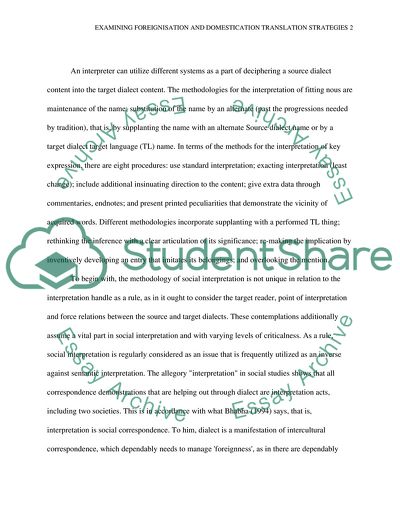Cite this document
(Examining Foreignisation and Domestication Translation Strategies in the Practice of Translation Essay Example | Topics and Well Written Essays - 2500 words, n.d.)
Examining Foreignisation and Domestication Translation Strategies in the Practice of Translation Essay Example | Topics and Well Written Essays - 2500 words. https://studentshare.org/humanitarian/1851520-examining-foreignisation-and-domestication-translation-strategies-in-the-practice-of-translation-using-examples-to-illustrate
Examining Foreignisation and Domestication Translation Strategies in the Practice of Translation Essay Example | Topics and Well Written Essays - 2500 words. https://studentshare.org/humanitarian/1851520-examining-foreignisation-and-domestication-translation-strategies-in-the-practice-of-translation-using-examples-to-illustrate
(Examining Foreignisation and Domestication Translation Strategies in the Practice of Translation Essay Example | Topics and Well Written Essays - 2500 Words)
Examining Foreignisation and Domestication Translation Strategies in the Practice of Translation Essay Example | Topics and Well Written Essays - 2500 Words. https://studentshare.org/humanitarian/1851520-examining-foreignisation-and-domestication-translation-strategies-in-the-practice-of-translation-using-examples-to-illustrate.
Examining Foreignisation and Domestication Translation Strategies in the Practice of Translation Essay Example | Topics and Well Written Essays - 2500 Words. https://studentshare.org/humanitarian/1851520-examining-foreignisation-and-domestication-translation-strategies-in-the-practice-of-translation-using-examples-to-illustrate.
“Examining Foreignisation and Domestication Translation Strategies in the Practice of Translation Essay Example | Topics and Well Written Essays - 2500 Words”. https://studentshare.org/humanitarian/1851520-examining-foreignisation-and-domestication-translation-strategies-in-the-practice-of-translation-using-examples-to-illustrate.


